Definition, functioning, and benefit
Definition, functioning, and benefit
In a context where the prevention of musculoskeletal disorders (MSDs) is becoming a priority, the professional exoskeleton emerges as an innovative solution to improve workplace ergonomics. Long confined to science fiction or the military realm, this equipment is now finding its place in many sectors: logistics, construction, industry, agriculture, healthcare... But what are we really talking about? How does an exoskeleton work? Who is it intended for? And above all, what concrete benefits can we expect from it?
Designed as an educational dossier, this introduction to the world of professional exoskeletons offers you a comprehensive overview, accessible to everyone, supported by concrete examples, reliable studies, and field testimonials. The objective: to help you understand the role of these devices in transforming working conditions and their impact on workers' health.
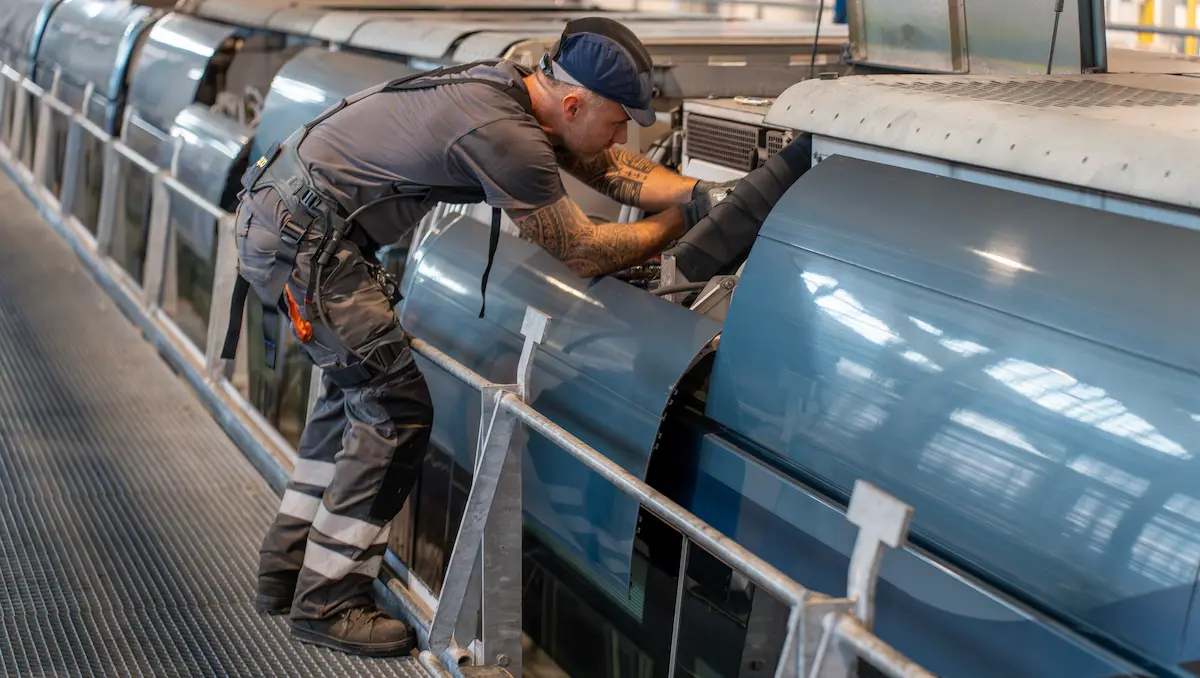
i Note
In France, musculoskeletal disorders (MSDs) account for 87% of recognized occupational diseases. Each year, 45% of MSDs result in severe consequences, with permanent disabilities.
The cost for companies?
More than 2 billion euros per year, including medical care, sick leave, team disorganization, and retraining. Occupational wear and tear is not inevitable. Solutions exist, including exoskeletons, to protect employees' health... and the performance of organizations.
87%
recognized occupational diseases.*
45%
MSDs lead to severe consequences.*
2Bn
cost for businesses in euros.*
A professional exoskeleton, also known as a Physical Assistance Device (PAD), aims to relieve the muscular effort of a worker during repetitive or strenuous tasks. Unlike the medical exoskeleton, used to compensate for motor disabilities, or the military model designed to enhance performance, the professional exoskeleton aims to prevent musculoskeletal disorders (MSDs) and improve workplace ergonomics.
Derived from the Greek exo (outside) and skeletos (skeleton), the word exoskeleton refers to an external structure that adapts to the user's morphology. Worn like a harness or a lightweight frame, the professional exoskeleton can be non-motorized (operating with spring or elastic systems) or motorized (more complex and energy-consuming).
"The human preserved, not the Human enhanced."
Here, the goal is indeed to support the worker, to relieve them, and to extend their ability to continue their activity without pain. The first models appeared in the 2010s, with an acceleration in adoption in sectors with high physical demands.
Today, the exoskeleton is gradually being integrated into workplace quality of life initiatives, alongside other measures: workstation ergonomics, adapted equipment, training in gestures and postures.
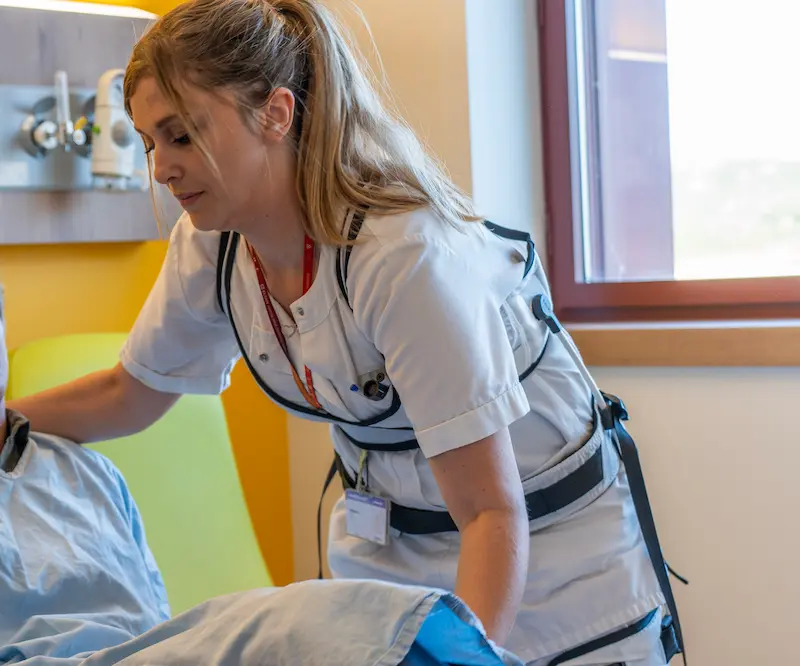
i Note
In biology, the exoskeleton refers to the rigid shell of insects or crustaceans. In the professional world, it refers to an external structure that supports the human skeleton without constraining it.

...experimental data reveal that passive exoskeletons can reduce the effort of lumbar muscles by 10 to 60% on average, during both dynamic and static tasks
While professional exoskeletons are a relatively recent technological reality, the idea of an "external skeleton" capable of amplifying human abilities dates back much further, both in literature and scientific research.
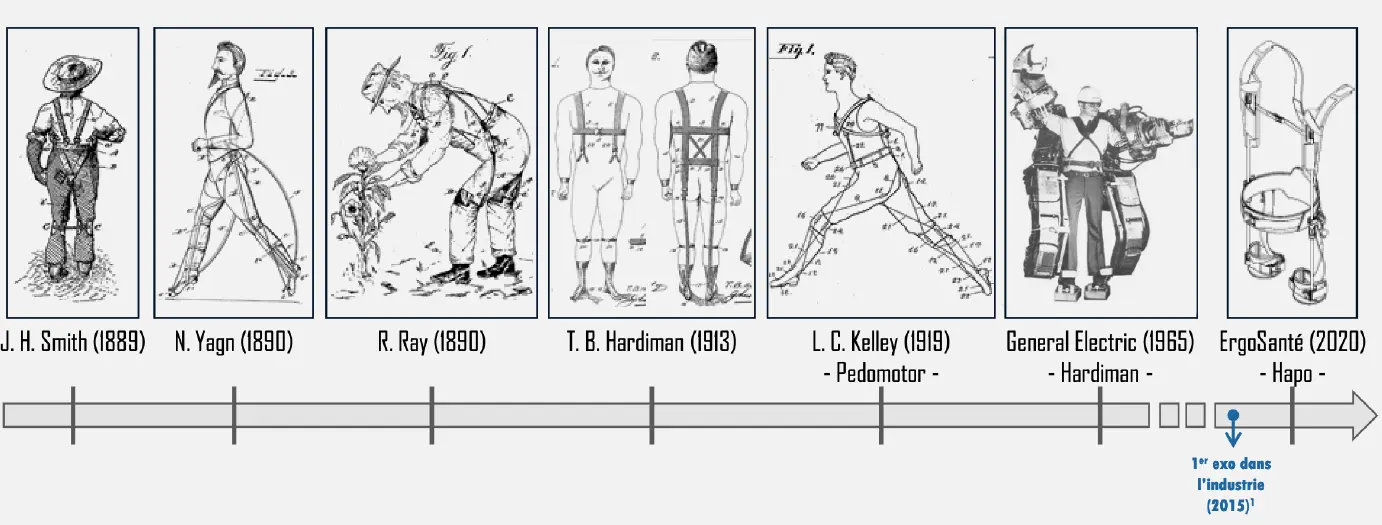
One of the very first examples of an exoskeleton appears in the novel "Galactic Patrol" published in 1937 by American science fiction author E. E. Smith. He envisions a robotic armor worn by space soldiers, already anticipating the concepts of physical assistance and enhanced strength. This type of representation would later inspire many films, mangas, and video games – from Starship Troopers to Iron Man.
Several exoskeleton prototypes have been developed since the late 19th century, including one designed in 1965 by General Electric in collaboration with the U.S. Army. The project was called Hardiman. It aimed to multiply human strength through a complex hydraulic system... but it proved to be difficult to use, particularly due to its weight (over 700 kg!) and jerky movements. It was only in the 2000s-2010s, with the miniaturization of materials and the rise of smart sensors, that exoskeletons truly found their place in the working world.
A professional exoskeleton functions as an external support structure, designed to assist certain parts of the body during physically demanding tasks. Depending on the models, it can relieve the arms, shoulders, back, or even the legs. It does not replace the human, but accompanies them in their effort.
There are two main categories of exoskeletons:
Non-motorized exoskeletons:
They do not have an external energy source. Their operation relies on simple mechanical systems (springs, elastics, cables, actuators, dampers). They store and redistribute the energy produced by body movements to reduce muscle load.
Their advantages? Ease of use, lightness, great freedom of movement, reduced cost for the company, and total autonomy.
Motorized exoskeletons:
These models incorporate actuators (motors or actuators), sensors, batteries, and microprocessors. They detect movement intentions and provide real-time motorized assistance.
More configurable because they can be programmed/reprogrammed, motorized exoskeletons are, however, heavier and bulkier, with reduced mobility for the wearer and a higher cost. They require training for use and regular maintenance.
How does a non-motorized exoskeleton relieve the back?
When an operator bends over to lift a load or perform a task in an inclined position, pressure is mainly exerted on the lower back. A non-motorized dorsal type exoskeleton shifts part of the weight of the upper body to the thighs, thereby reducing the mechanical strain on the spine. The result: the lower back muscles are less stressed, fatigue is reduced, and posture is improved. This biomechanical principle does not limit movements but accompanies them, allowing the user to remain mobile while being supported.
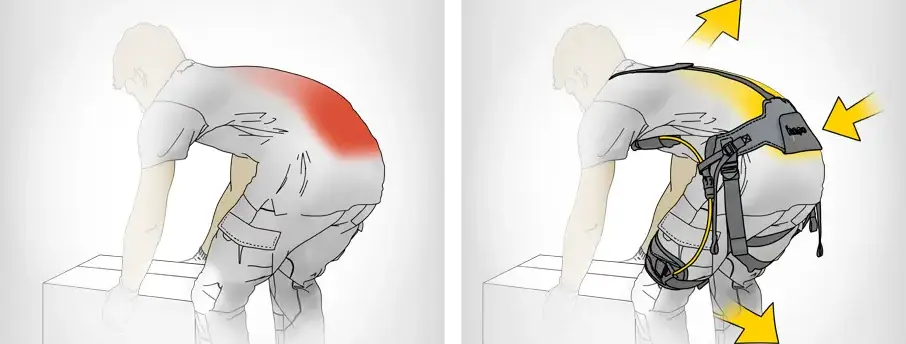
How does a non-motorized exoskeleton relieve the arms and shoulders?
When an operator performs repeated or sustained tasks with their arms at mid-height in front of them, the pressure is mainly exerted on the shoulders. A non-motorized exoskeleton for the arms will support part of the weight of the upper limbs, relieving the shoulders (anterior deltoids) and the arms (biceps brachii).
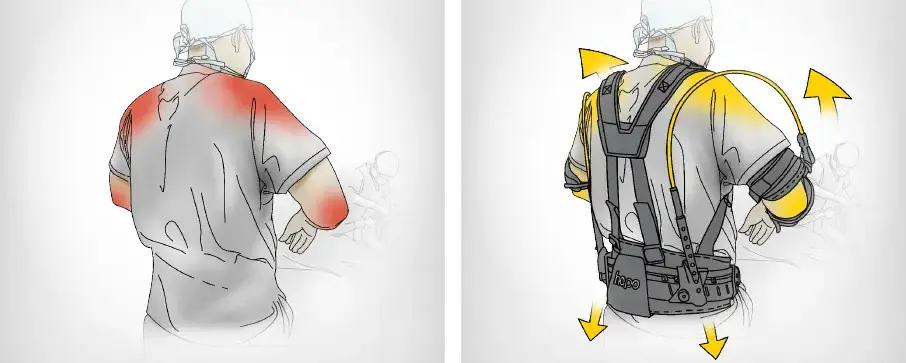
Professional exoskeletons are useful in many sectors where employees are exposed to repeated physical efforts, awkward postures, or repetitive movements. Among the most affected are:

Assistance with patient transfer, bed bathing, extended care.

Installation of partitions, tiling, high-level painting.

Handling, order preparation.

Harvesting, pruning, animal care.

Assembly,
maintenance,
welding.
These figures reflect a gradual professional wear and tear, often invisible, but with serious consequences: sick leaves, forced career changes, early unfitness. Exoskeletons are then integrated as a primary prevention tool, complementary to traditional ergonomics.
* Source: ameli
1st
Low back pain is the leading cause of disability before the age of 45.*
20%
workplace accidents are related to back pain*.
30%
work stoppages are caused by an MSD*.
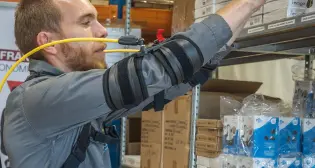
. Back relief during repeated bending
. Less fatigue at the end of the day
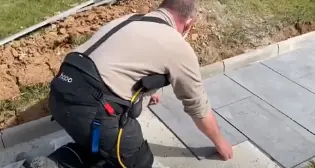
. Less pressure on the knees and back when working on the ground
. Improvement of prolonged flexion postures

. Reduction of back pain during patient transfers
. Mobility preserved in confined spaces
i Note
Most non-motorized professional exoskeletons are worn like a harness or a backpack. They require no workstation modifications or heavy infrastructure.
A few days of testing is often enough to validate their usefulness in the field.
The integration of professional exoskeletons within companies serves a dual purpose: preserving workers' health and consequently improving the overall performance of organizations. Contrary to popular belief, these devices are not intended to increase productivity at all costs, but to reduce strain and sustainably support workers in their tasks.
+
. Immediate relief for certain body areas (back, shoulders, arms, knees)
. Reduction of pain, muscle tension, and the feeling of fatigue
. Prevention of musculoskeletal disorders (MSDs)
. Better posture, better awareness of movement
. Job retention for aging individuals or those with RQTH (Recognition of Disabled Worker Status)
. Enhancement of workplace health: feeling of being considered
+
. Compliance with the employer's obligations for the prevention of occupational risks, in accordance with Article L4121-3 of the Labor Code
. Reduction in work stoppages and accidents related to handling or strenuous postures and repetitive movements
. Reduction of indirect costs related to absenteeism, disorganization, or turnover
. Improvement of quality of work life (QWL)
. Enhancement of employer image, increased attractiveness in certain high-demand jobs
i Did you know?
The Labor Code in its article L4121-2 sets out 9 general principles for the prevention of occupational risks:
The adoption of an exoskeleton meets the 5th principle.
1 Avoid risks
2 Evaluate the risks that cannot be avoided
3 Combat risks at the source
4 Adapt work to the person
5 Take into account the state of technological development
6 Replace what is dangerous with what is not, or less so
7 Plan prevention
8 Prioritize collective protective measures over individual measures
9 Give appropriate instructions to the workers
If the benefits of professional exoskeletons are real, their implementation cannot be done without a comprehensive reflection and appropriate support. The exoskeleton is not a miracle solution, but a complementary tool in a broader prevention strategy.
. Not all gestures can be assisted: some complex or unpredictable movements are not suitable for the use of an exoskeleton
. Initial discomfort may hinder adoption, especially if the equipment is poorly adjusted or poorly explained
. Improper use can lead to new biomechanical constraints on other parts of the body
. Preliminary ergonomic diagnosis to identify truly strenuous tasks
. Field testing phase, with feedback from workers, to ensure good acceptance of exoskeletons
. Training in use, HR and technical support
. Involvement of all stakeholders, including occupational health and staff representatives

The exoskeleton should not be a patch on poor work organization. It is integrated into a fundamental approach, just like workstation arrangement or training.
Ergonoma Journal
Special Issue on MSDs, 2022
In 7 steps, ensure the successful adoption and regular use of the exoskeleton in your company.
Want to know more?
There is an AFNOR standard NF X35-800 regarding the method of integrating physical assistance devices and robots with restraint, such as exoskeletons, available for purchase on their site:
AFNOR standard NF X35-800
1 Conduct an ergonomic assessment with the help of a specialist to identify the repetitive or risky movements actually involved
2 Choose a model suited to the sector, the task, and the morphology
3 Organize a field test phase (1 to 2 weeks)
4 Involve end users from the beginning of the process
5 Offer simple and quick training for use
6 Measure the results (pain, fatigue, acceptance, productivity)
7 Plan regular follow-up and a point of contact (prevention officer, HR, QWL manager)
With the rise of professional exoskeletons on the market, it is essential to rely on a trusted player, an expert in ergonomics and physical assistance at work. Hapo is a French company that designs, manufactures, distributes, and evaluates non-motorized exoskeletons adapted to real-world conditions.
Based in France, Hapo relies on multidisciplinary expertise in biomechanics, functional design, and the prevention of MSDs. Our solutions are designed in collaboration with ergonomists, healthcare professionals, and field users. We believe in simple, human, non-invasive technology.
Our flagship models – such as the Hapo BACK, the Hapo SD, or the Hapo FRONT – are non-motorized, lightweight, discreet, intuitive, and can be set up in less than 30 seconds. Their effectiveness is validated by biomechanical laboratory tests and field tests conducted with industrial groups, SMEs, local authorities, and healthcare institutions.
| Product Name | Type of Support | Targeted Sectors | Key Features | Observed Benefits |
| Hapo BACK | Non-motorized exoskeleton for the back | Logistics, industry, construction, craftsmanship | Lightweight (1.2kg), no motor, quick adjustment, lumbar support | Reduction of back fatigue, better posture |
| Hapo SD | Non-motorized exoskeleton for the back | Handling and logistics, agriculture | Flexible structure, freedom of movement, dynamic support | Prolonged relief, optimized mobility |
| Hapo CS | Non-motorized exoskeleton for the back | Healthcare and care, logistics | Adapted to both female and male morphology | Back relief |
| Hapo FRONT | Non-motorized exoskeleton for arms and shoulders | Agriculture, industry, construction, healthcare and care | Freedom of movement, arm support | Less shoulder and elbow pain, reduction of muscle fatigue |
| Hapo UP | Non-motorized exoskeleton for arms and shoulders | Construction, industrial maintenance | PPE compatible, support for raised arms, easy to put on | Less shoulder and elbow pain, reduction of muscle fatigue |
| Hapo NECK | Non-motorized exoskeleton for the neck | Logistics, construction, industry | Compatible with Hapo UP | Neck muscle relief |
At Hapo, we support you from the needs analysis to the on-site implementation:
. Personalized studies and field tests
. Fast delivery throughout France, Europe, and the United States
. Responsive after-sales service and spare parts available
. Short training sessions on usage
. Clear documentation, safety sheets, and feedback
Our products are made in France or the United States, with sustainable materials. We prioritize short supply chains and are committed to designing simple, effective solutions that align with current environmental challenges.

French expertise,
independent

Products tested and proven
in dozens of sectors

CSR Commitment
and Eco-design

Human support,
personalized
Want to know more?
Our advisors are available to organize an on-site test or guide you to the solution best suited to your work environment.
-> Discover our range of professional exoskeletons
-> Contact us for a personalized assessment
Professional exoskeletons are not just simple technological gadgets: they are concrete levers of transformation to improve working conditions, reduce pain, prevent injuries, and sustainably support employees in their tasks.
When used appropriately, with suitable support, they can significantly reduce hardship, improve comfort at the workstation, and preserve health in the long term. They offer measurable benefits for both employees and companies.
However, their integration should not be taken lightly. It requires an ergonomic analysis, active listening to users, and a sincere commitment to prevention. Because a poorly chosen or improperly used exoskeleton can, on the contrary, create new constraints. It does not replace good work organization: it complements and strengthens it.
Beyond technological innovation, a new approach to work is emerging: more preventive, more inclusive, more respectful of the body. An approach in which each position is thought out in advance, not to adapt to the machine or the task, but to preserve the human.
This is the true silent revolution of exoskeletons: not to add technology, but to reconcile performance and health within the very organization of work.
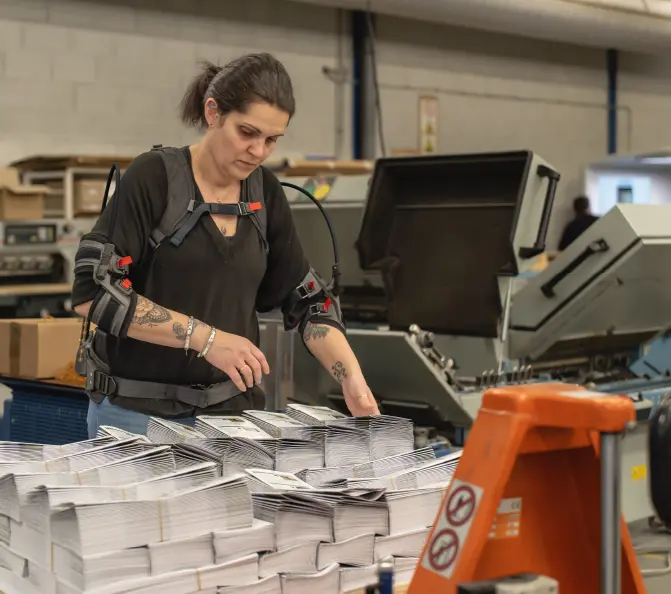
And you, where are you in your process?
For this, Hapo provides you with a free and simple ergonomic diagnostic tool. In a few minutes, you get a personalized assessment of the physical assistance needs at your workstation.
->Do your diagnostic here
a first concrete step towards a safer, healthier, more sustainable work environment.
A professional exoskeleton is used to physically support the user during strenuous or repetitive tasks. It helps reduce muscle effort, relieve certain areas of the body (back, shoulders, arms, etc.), and prevent musculoskeletal disorders (MSDs).
Exoskeletons are particularly useful in sectors where handling, demanding postures, or repetitive movements are common: industry, construction, logistics, agriculture, health, and care.
Yes, the majority of professional exoskeletons are designed to be ergonomic, lightweight, and easy to set up. Non-motorized models, in particular, are easy to integrate in the field after a short adaptation phase.
A motorized exoskeleton is equipped with sensors and requires electrical power. Non-motorized exoskeletons operate without a motor, using springs, cables, or mechanical systems to support movement. They are lighter, cheaper, and simpler to implement.
No. The exoskeleton is a complementary tool that should be part of a comprehensive risk prevention approach. It does not replace ergonomic analysis, workstation adaptation, or training in proper gestures and postures. It supports reducing strain, not masking it.
External structure worn on the body, designed to physically support certain areas (back, arms, shoulders, etc.). The professional exoskeleton is used to reduce strain and prevent MSDs.
A set of conditions that affect muscles, tendons, or nerves. They are often caused by repetitive motions, physical exertion, or awkward postures. MSDs are the leading cause of occupational illness in France.
Science that aims to adapt work to humans. It takes into account physical and cognitive abilities to improve safety, comfort, and performance of employees. The use of an exoskeleton is part of a comprehensive ergonomic approach.
Study of working conditions aimed at identifying factors of hardship and proposing concrete improvements. It helps determine if an exoskeleton is relevant, and which one to choose.
Set of actions aimed at preventing the occurrence of occupational risks. The exoskeleton, when integrated early on, contributes to this prevention by reducing physical constraints from the design stage of the workstation.
. Study 2021: Evaluation of the Biomechanical Impact of Passive Exoskeletons in Logistics
. Constructive Ergonomics, edited by Pierre Falzon, PUF, 2013
. Exoskeletons: Contribution to Occupational Health and Safety, Research Gate, 2023
. Human Factors in Wearable Technologies, AHFE, 2023
. Galactic Patrol, E.E. Smith, 1937 - first literary mention of a robotic exoskeleton in science fiction
. File “Exoskeletons and Prevention of MSDs”
. www.inrs.fr
. 10 Misconceptions About Exoskeletons - ED 6295
. Acquisition and Integration of an Exoskeleton in a Company - ED 6315
. Acceptability and Acceptance Processes of Exoskeletons: Evaluation by Questionnaire - TF 274
. Annual Report 2023: Work Accidents, MSDs, and Prevention
. www.ameli.fr/entreprise
. Case Studies on the Integration of Physical Assistance Technologies
. www.anact.fr
